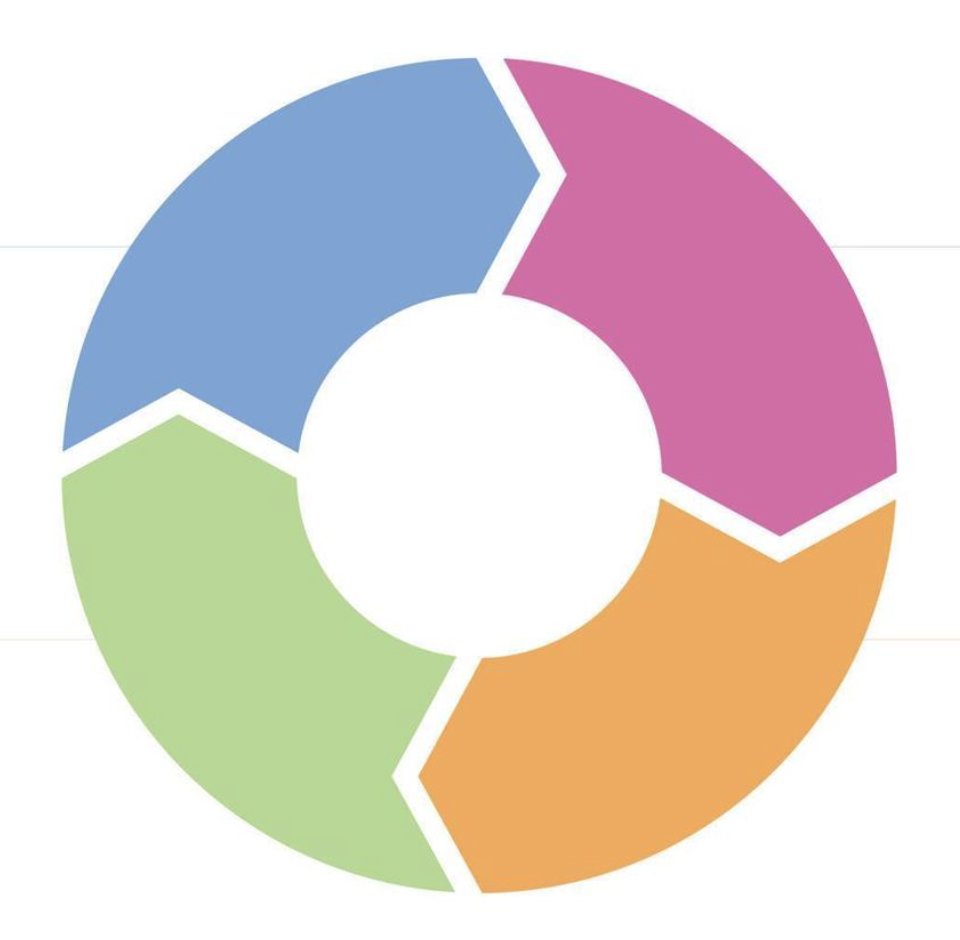Which organizational structure should you choose to successfully launch a new startup? After 20 years of professional experience and multiple experiences lived or observed of both successes and failures, I finally arrived at a scheme that seems optimal to me from every point of view:
The circular organization: “Product - Tech - Business - Data”

The main idea behind this organization is to obtain a flow such that each pole of the company produces for the next pole and to be able to work awaits the work of the previous pole, because:
- to manufacture a solution at the “tech” pole it is necessary to first have imagined and specified it at the “product” pole
- to sell a solution at the “business” pole it is necessary to first have manufactured it at the “tech” pole
- to have data at the “data” pole it is necessary to first have customers using the solutions of the “tech” pole
- to be able to imagine a solution to the problems of the customers, it is necessary to have knowledge on how the customers use the solutions
Which creates “perpetual motion” companies specialized in the ever more efficient manufacture of solutions for the customers.
Furthermore, we can note that this organization is such that:
- the professions that work mainly for IT, the “techs” (the “tech” pole and the “data” pole) interact mainly with the “empaths”
- the professions that work mainly on humans, the “empaths” (the “product” pole and the “business” pole) interact mainly with the “techs”
This will avoid “positive feedback” loops, such as during an economic crisis or an epileptic seizure, which can appear when techs are in too much contact with techs, or empaths with empaths.
In other areas examples of this well-known and extremely common problem are:
- writing books about books,
- publishing science about science,
- making TV shows about TV shows,
- judging one's own thoughts (which are judgments), etc...
It is the analogy of the dog running to try to catch its tail, or the snake trying to digest itself. When we model and solve this type of equations, we see that they have in common that they diverge, which always contributes to damaging the system or mechanism considered, as in a Larsen.
And you, what are your tips and optimal organizational structure for launching a successful startup?

What happened in IT services in the 1980s-1990s?
Companies used to sell lines of code
Any industry needs to sell something in a way of its choosing, and for a while people tried to sell lines of code as their currency in exchange for money, following the idea that it’s what they were producing anyway, so why not put a price on them and sell them directly?
The flaw of this plan appeared gradually, as more and more companies were less and less focused on what was actually delivered, so long as it was delivered and making lots of money. So developers started to generate more and more lines of bloated code for less and less value created for the company, meaning that features would convert with time into more and more lines of code, hence pushing the prices up and the service quality of this industry down.
So what was the answer of the IT services industry?

What happened in IT services in the 2000s-2010s?
Companies used to sell hours of work
This issue of the previous decades was fixed by the introduction in the early 2000s of agility, counting time and calculating efficiency in order to prevent developers from overselling bloated source code. This solution kind of worked, for a while anyway, and IT services companies were efficient again.
Then of course developers found another trick in this new situation in order to continue to oversell:
- when lines of code were sold, they were out of reach from the client and in the hands of the contractor, hence bloating the lines of code generated
- when time of work was sold, time was out of reach from the client and in the hands of the contractor, hence bloating the time spent on every ticket
So we were back to square one: the IT service quality went down again. So what answer for the 2020s-2030s?

What
solution for the future?
Companies can sell tickets, or features, or points of difficulty
Changing the contracts from selling hours into selling tickets or features or points of difficulty is a minuscule change, and yet it achieves everything:
- because tickets are in the hands of the client, they’re not in the hands of the contractors, so now it’s impossible for them to bloat anything
- now a client can compare the efficiency of different companies, and challenge them
- now a client can price his project with great confidence, and move the burden of bug fixes onto the contractor, so out of his way








